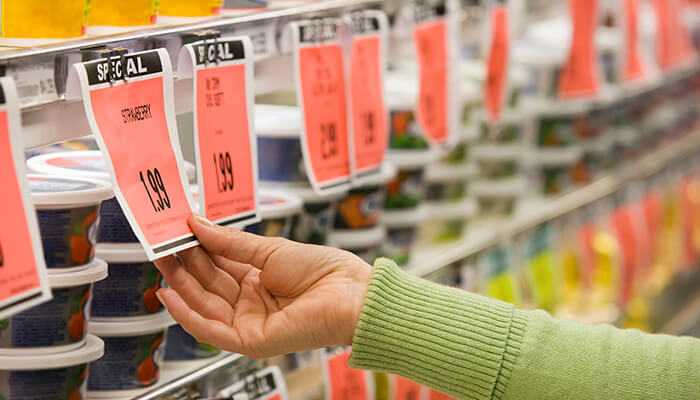Underwear, granola bars, cookies, detergent, and deodorant. When you purchase any of these commonplace items, you will likely scan not one, not two, and occasionally three separate prices crammed beneath them on the shelf at the store.
One price label will usually read “unit price.” That label, which reads “You Pay,” or the amount a customer will pay at checkout, will be placed next to another label for the same product. Next, on days when there are sales, a third price label—often in a vivid neon color—is attached to the other two. It has big, bold numbers on it that are higher than the first but lower than the second.
Additionally, there is another price indicator that is dangled in front of shoppers for certain specific purchases, like luxury goods, electronics, and cars. The term “manufacturer’s suggested retail price,” or MSRP, refers to it.
It is challenging to combine all of these different prices into a single tag because product pricing is erratic. The MSRP and “regular price” are usually the ones that don’t change over time, but when sales happen, retailers are forced to update their price tags appropriately.
But are these price tags all relevant to consumers, or even helpful? Industry experts say that depends.
They’re essentially a tool for retailers to encourage customers to make a purchase, according to Laura Hensen, executive director of the University of Wisconsin-Madison’s Kohl’s Center for Retailing.
However, there may also be benefits for customers.
The price per volume or weight of the item is known as the unit price. Therefore, the unit price of a product that comes in various package sizes will vary depending on the type of package. Whether a product is a grocery item or a household item like detergent, it is helpful to display the price per unit so that consumers can quickly compare prices and get the best value for their money. This is especially true when the product is available in multiple sizes.
A large orange juice jug may have a unit price value that indicates “big equals better deal” when compared to a smaller jug, according to John Talbott, director of Indiana University Kelley School of Business’s Center for Education and Research in Retail. Usually, retailers are attempting to persuade customers that purchasing in bulk has advantages.
Even so, it’s crucial to avoid assuming that the larger option represents a better value. Customers can get that clarity by looking up the unit price for each option.
In other places, low-cost retailers like TJ Maxx attach a price tag with the final price the customer will pay at the register in addition to an additional, erroneous “compare at” price.
The term “compare at” implies that the price is what a customer would have paid if they had bought the item from a different retailer, according to Mark Cohen, the director of retail studies and an adjunct professor at the business school at Columbia University.
He claimed that manufacturers held the power before then. They would say, “We are not selling to you unless you price our product at this price.” They discriminated against distributors who disobeyed their pricing policies by using it as a tool.
“I firmly believe that the MSRP is nothing more than a by-product of a long-ago statute. Talbott stated, “I don’t think it’s that useful to consumers now.” “That’s one of those industry lingos from the past that just sticks around because that’s how it’s always done.”



